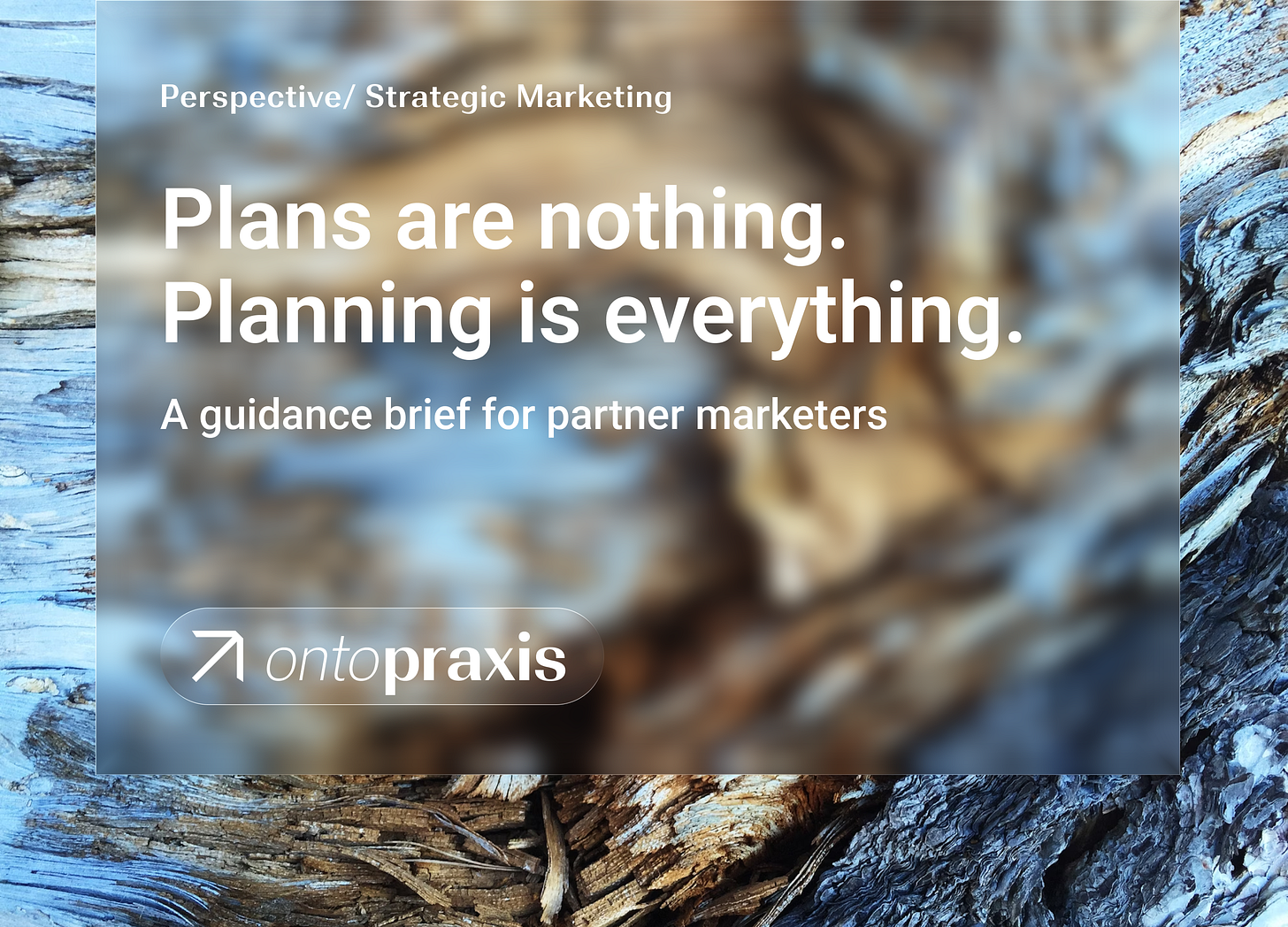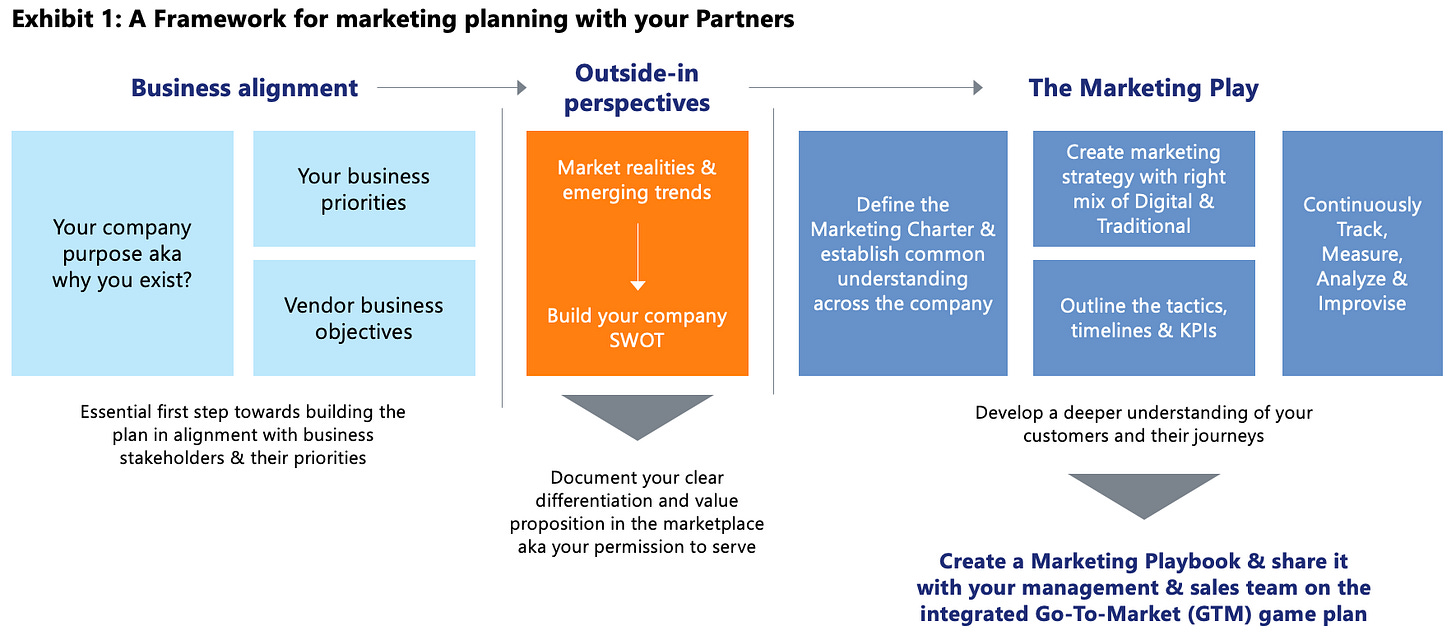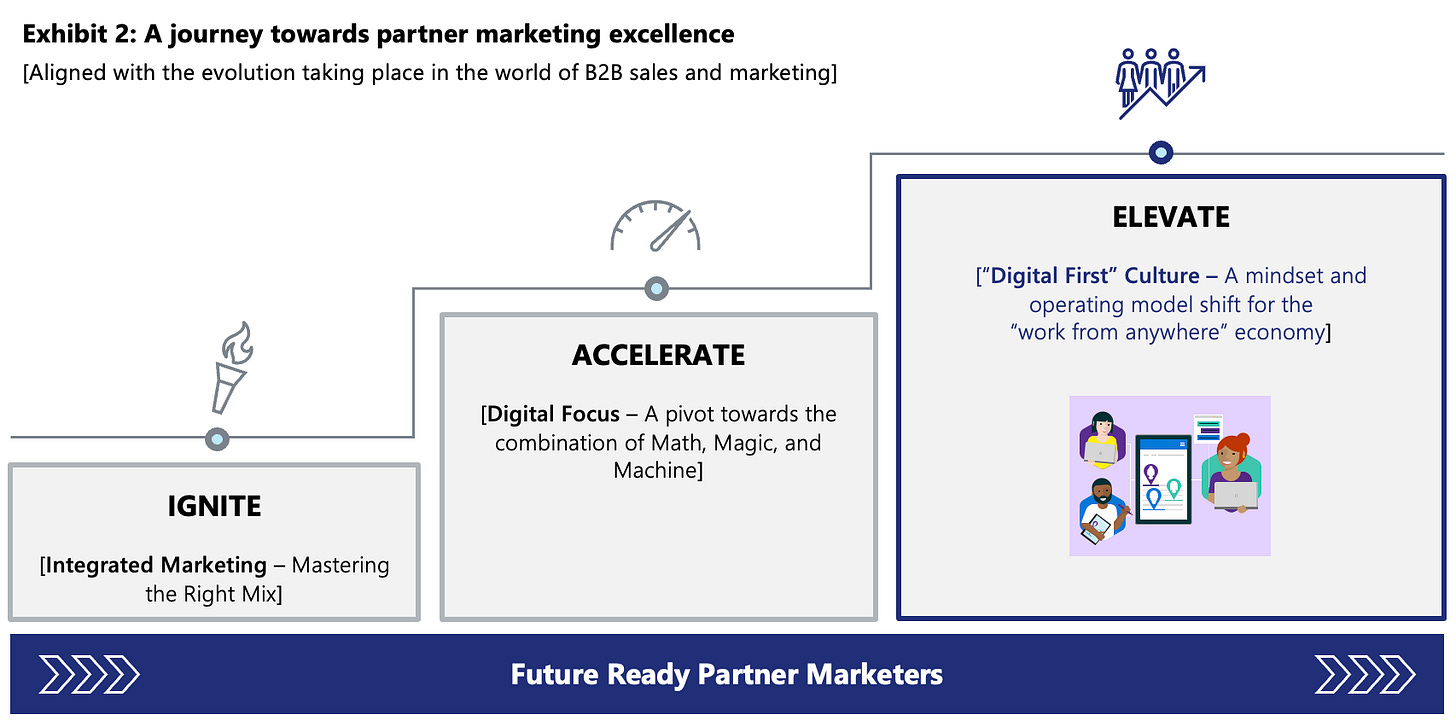Plans are nothing. Planning is everything.
Drive alignment, harness capabilities, and build mindshare with your partner marketers through a strategic planning exercise.
Summary
Achieving commercial excellence through partners requires dedicated and thoughtful engagement with the partner marketing fraternity. Therefore, vendors committed to channel marketing excellence should actively invest in strategic planning with their key growth partners. This needs to be a phased, guided, and assisted engagement spearheaded by the vendors.
This report establishes the criticality of marketing planning with partners and provides an approach for the vendors to embark on this journey.
Partner Marketing 2.0: A Hit Refresh Moment
Recent studies have shown that Channel/Partner Marketing is becoming a top priority for CMOs. However, delivering on this expectation requires a rethink of how vendors engage with their partner marketers.
For the longest time, the focus has been primarily on the timely and effective usage of the Market Development Funds (MDF). This is myopic as it misses the opportunity to drive a long-term strategic engagement and build a trusted community with your ecosystem partners. A third-party study[1] suggests that 59% of partners don’t always create a comprehensive marketing plan for their business.
A key driver of this short-term thinking is focusing on immediate results rather than using partner marketing as a strategic lever. Partner marketers are overburdened managing multiple suppliers, brands, portfolios, funds, tools, and policies, in addition to their organizational expectations. Instead of being customer experience architects, they operate as a lead-generation engine.
This routine leaves little room for them to understand, organize, and act proactively in the ever-changing B2B buyer landscape and other market forces shaping the marketplace. Vendors willing to play the long game need to rethink and redesign their partner marketing engagement model to leverage the full potential of their partner marketers. However, this doesn’t require a complete overhaul and can be built upon the existing capabilities that the vendor has invested in.
A well-designed planning approach helps future-proof partner marketers
Research[1] validates that marketing planning is a difference-maker in driving significant growth: 40% greater growth is projected when partners commit to continually creating a marketing plan for their business.
Planning is a bedrock activity that helps vendors and partners envision the experience from the customers’ vantage. The idea is to move strategically, not conveniently, as outlined in Exhibit 1.
Partner segmentation is key to success. It’s both an art and a science, and it's always prudent to lead with data. Some lead indicators include partners with joint business plans, those eligible for marketing investment, those presenting significant growth opportunities, and those with an existing marketing function.
Start with business alignment built upon a customer-first mindset. A decade ago, Simon Sinek wrote “Start with Why,” a book that inspires organizations to be purpose-driven. Let this be the north star when partners define their unique differentiation in sync with your mission. This is the critical first step that determines the quality and longevity of the collaboration.
Leverage “outside-in perspectives” shaping B2B commerce. A combination of social, economic, and technological trends influences how customers behave. Provide the big-picture view of the headwinds and tailwinds impacting the business. Understanding these trends helps partners assess whether the forces are convergent or divergent to their capabilities and develop a SWOT analysis. This will provide a realistic view of alignment between ambition and current capabilities, which will help tightly define the core value proposition.
Define the marketing play that drives commercial success. Partners must begin by defining their marketing charter and ensuring it is aligned and well understood across their organization. This also needs to be endorsed and supported by their C-suite.
“Marketing planning with partners is mission-critical to an effective demand strategy.”
- Partner Marketing Director, Fortune 50, Hi-Tech Firm
As a next step, vendors should engage with partners to help develop the joint marketing plan and ensure a balance between vendor and partner priorities. The plan should be surgical in terms of goals, timelines, and metrics that will define success.
Lastly, agree on a governance model that ensures visibility into both lead and lag indicators, as well as room for course corrections.
Planning as an outcome, not an output
Implementing a marketing planning engagement with partners is not a one-and-done effort and requires a phased approach led and assisted by the vendors [Exhibit 2]. The objective should align with evolving customer priorities, journeys, and preferences rather than a periodic documentation exercise.
A few critical considerations while embarking on this journey:
Begin by aligning marketing objectives to business priorities. Misalignment fuels mistrust and is counterproductive to business survival and growth. For marketing to play a critical role, it must be intertwined with the broader commercial function. An excellent place to start is with a joint business plan.
Create a prioritized list of executable, measurable goals. Keep the plan real and define specific goals that can be tracked and measured. Define success metrics that are aligned with the overall commercial success.
Nurture organization-wide commitment to the plan. Marketing must play a unifying role within the company to deliver the desired customer experience. This is only possible if the entire C-suite is aware and supportive of the marketing charter and plan.
Effectively communicate the plan. Channelize resources and garner support by proactively sharing the plan with all relevant stakeholders. This also ensures better orchestration in customer outreach and engagement.
Keep the plan alive. Static plans are meaningless for operating in a dynamic environment. Hence, revisit the plan regularly to ensure it reflects the market realities and is structured to drive growth.
“To ensure that your partner ecosystem leverages the power of results-driven marketing, it is imperative that you engage in a joint hands-on business planning workshop.”
- Head of Partner Marketing, Data Cloud Company
Together aligned or forever behind
Change is never easy, especially after two years of pandemic-related disruption. Vendors need to support partners with the Right Mindset, Skillset, and Toolset to help future-proof their business. A few essential steps in that direction:
Conduct a marketing maturity assessment. Evaluate the current state of your partners' capabilities and the maturity of their marketing functions. This will enable you to segment partners and develop an engagement plan accordingly.
Identify the marketing skills gap. Map their existing skills to the desired future capabilities to identify areas of improvement. This dovetails into skills planning and competency-building efforts.
Certify partner marketers in marketing planning. Hardwire planning into their marketing operating model by making it a competence. This will build the knowledge and confidence to partake in strategic conversations actively.
Provide a marketing planning toolkit. For broader adoption, make it easier to embark on the journey. Create a toolkit comprising a guidance document and a planning template to get them started. Seek professional help to coach your partners through the process.
[1] State of Partner Marketing, IPED Consulting




